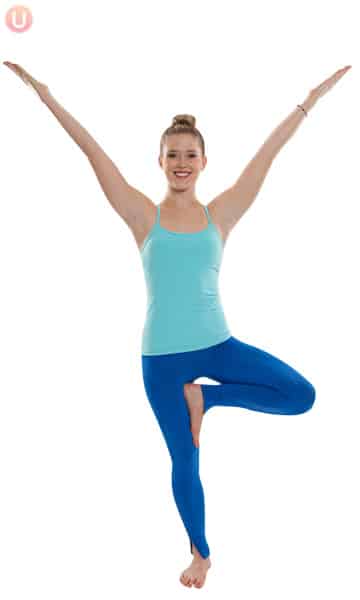This post contains affiliate links. Please see our disclosure policy.

Tree Pose with Branches improves your balance and stability while strengthening your legs, stretching your spinal column and opening up the front of your body. If you want to work on balance you should learn how to do Tree Pose with Branches.
Balance is one of the most challenging parts of yoga. Most people are unfamiliar with how to even begin when it comes to balance poses. In fact, when first time yoga students leave practice, most say that the balance was the most challenging part.
Balance requires core stability, visual focus and concentration. We do not practice any of these in our regular, every day life.
Tree Pose is the most basic of balance poses. The simplicity of Tree Pose makes it accessible to beginners and helps everyone learn the tools of balance that will lead them to other, more challenging balance poses, such as Eagle Pose or Dancer.
According to Yoga Journal, your feet are the foundation of a good balance pose. When the feet are in proper position and grounded correctly, the rest of the pose will be more attainable. After your feet are properly grounded, be sure to pull your core in tightly and hold the middle of your body in.
Last but not least, establish a focal point for your eyes to gaze at. When you have an immovable object to look at, you are more likely to stay still.
If you are struggling with Tree Pose at first, keep your arms at your side and move them up gradually into branches. Alternatively you can hold your hands in prayer position in front of your chest.
Once you have learned Tree Pose you can add a new element by closing your eyes to make it more challenging or move on to a more challenging balance pose.
How to Perform Tree Pose With Branches
- Stand tall with feet together and reach arms straight up overhead.
- Tighten your core as you slide your right foot up your to rest on your left calf or pull it higher to rest on your inner thigh. Avoid placing your foot on the inside of your knee.
- Hold as still as possible for 30 seconds and breathe slowly. Switch sides.


